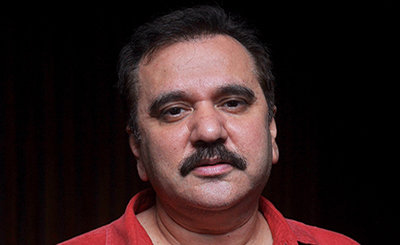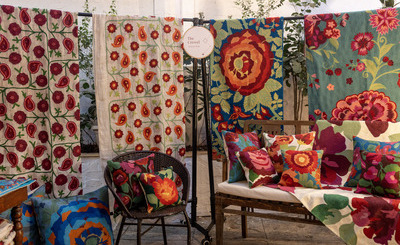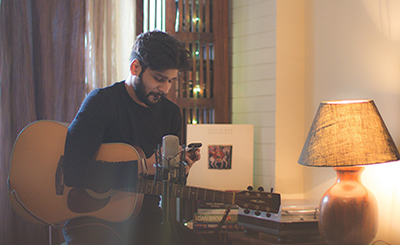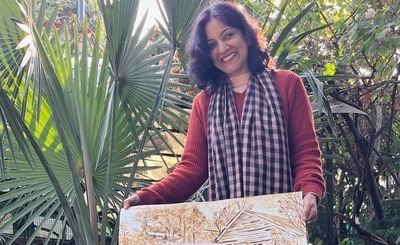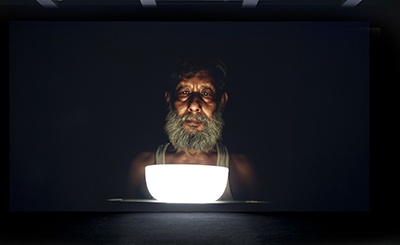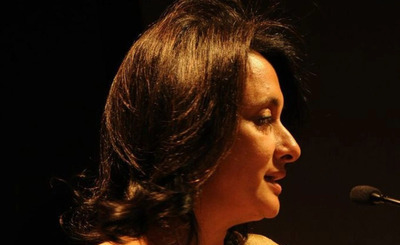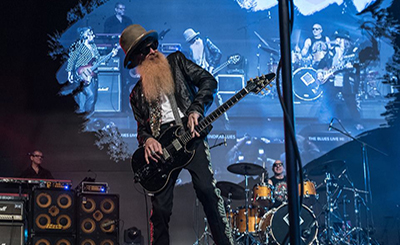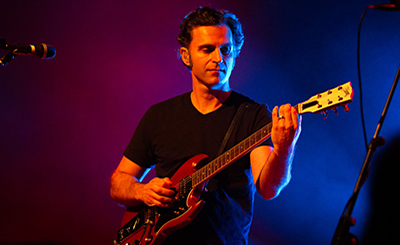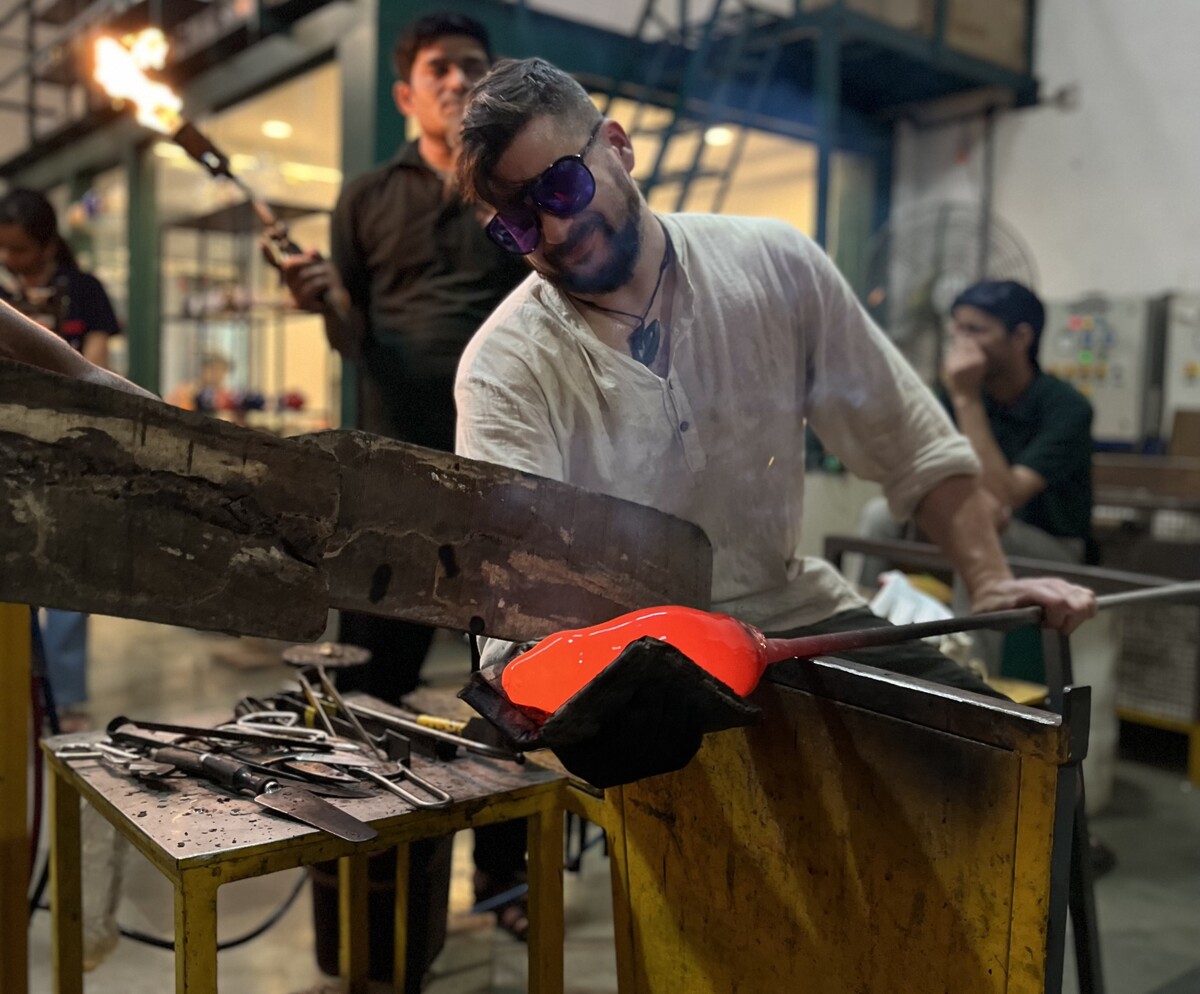
Grant Garmezy at work at Arjun Rathi's Rural Modern Glass Studio in Mumbai. Photo courtesy of Rural Modern Glass Studio
Arjun Rathi is leading the charge in initiating an Indian Art Glass movement through collaborations with renowned international glass artists. Recently, he partnered with Grant Garmezy, the US-based sculptor known for his stunning blown work recreating the Indian wildlife
Mumbai-based lighting designer Arjun Rathi, co-founder of Rural Modern Glass Studio (and Design Democracy), has been on a mission to initiate an Indian Art Glass movement. To this end, he has been collaborating with some of the best glass artists across the globe. The principal designer at Arjun Rathi Design, which makes bespoke, hand-finished lighting, he organises artist-in-residence at his multi-disciplinary studio where young Indian glass artists get to learn from experts. Through glass blowing and other glass production techniques, the Rural Modern Glass Studio produces glass art, tableware, lighting, furniture, and other accessories.
Recently, Rathi collaborated with Grant Garmezy, the US-based sculptor known for his handmade blown glass animal art and glass antlers that are at once modern and rustic. He flew down to Mumbai’s first hot glass studio for the first time to create some unique artworks reflecting Indian culture. To mark the collaboration, an exhibition showcased his works that explore hyper realistic recreations of Indian wildlife, including surrealist daggers, gilded by local artists. The event saw Garmezy join hands with another great glass blower, Evan Schauss, for the first time. Also on display were the collaborative works by Erin Neff Garmezy, Grant’s wife, and Jeremiah Jacobs, who has been to the studio previously, too.
Rathi’s collaboration with international glass artists and sculptors, renowned for their proficiency in glass art, yields works that are inspired by Indian motifs and symbols. The studio also invites contemporary Indian artists who use glass as a medium in their practice. Besides, it is trying to introduce glass as a versatile medium to the Indian design and glass enthusiasts through interactive workshops and tailored support for bespoke glassware production. Rathi, who has been working in the field for almost 12 years now, says that most of the artists make vessel shapes and explore colours and patterns, but a glass sculptor is very rare internationally, let alone in India.
%20(1).jpg)
Arjun Rathi, Principal Designer at Arjun Rathi Design, Founder of Rural Modern Glass Studio and Co-founder of Design Democracy. Photo courtesy of Arjun Rathi Design
Talking about the collaboration with international artists, he says, “Glass art is not inherently Indian. When you gather glass artists with different techniques, it takes a decade or a lifetime for them to master certain techniques. Every artist specializes in different skills. They have helped us develop new ways of designing lighting. They have enhanced the skills of Indian glass to a very high level. So, having artists here constantly shows us all the progress taking place in the glass world, exposes us to new techniques, and teaches us how we can apply those to functional objects and lighting, or simply produce art.” Glass art is very new to India, but Rathi believes it’s slowly becoming ingrained in the culture here. The other artists who have been part of the artist-in-residence programme include Brent Sheehan, Tim Soluna, Anjali Singh, and Matthew Piepenbrok and Gage Stephens. “They are all at the top of their game,” said Rathi.
At his hotshop (glass studio), Grant does ‘off-hand’ sculpting, which means that he sculpts the glass free hand while it is heated to about 2,000 degrees. He uses an extremely hot torch and a variety of hand tools to manipulate and manoeuvre the glass. Since he does not use moulds, each and every piece he creates is a unique piece of art. Garmezy is the only artist who was sponsored by a glass colour company called Kugler; he worked on a very interesting and intense project wherein he created a colour chart for them. It includes over 200 colours, and he crafted a glass dragon for each individual colour. “For a glass artist, it is a huge resource because glass colour is so expensive. With the help of this, you can precisely know what you’re purchasing. As a young artist, I would buy the wrong colours because they would look different on the colour chart. However, when sculpting with them and blowing on them, they would turn out differently,” said Garmezy, one of the best glass sculptors in the world, who has been in the field of glass-blowing and sculpting for over two decades.
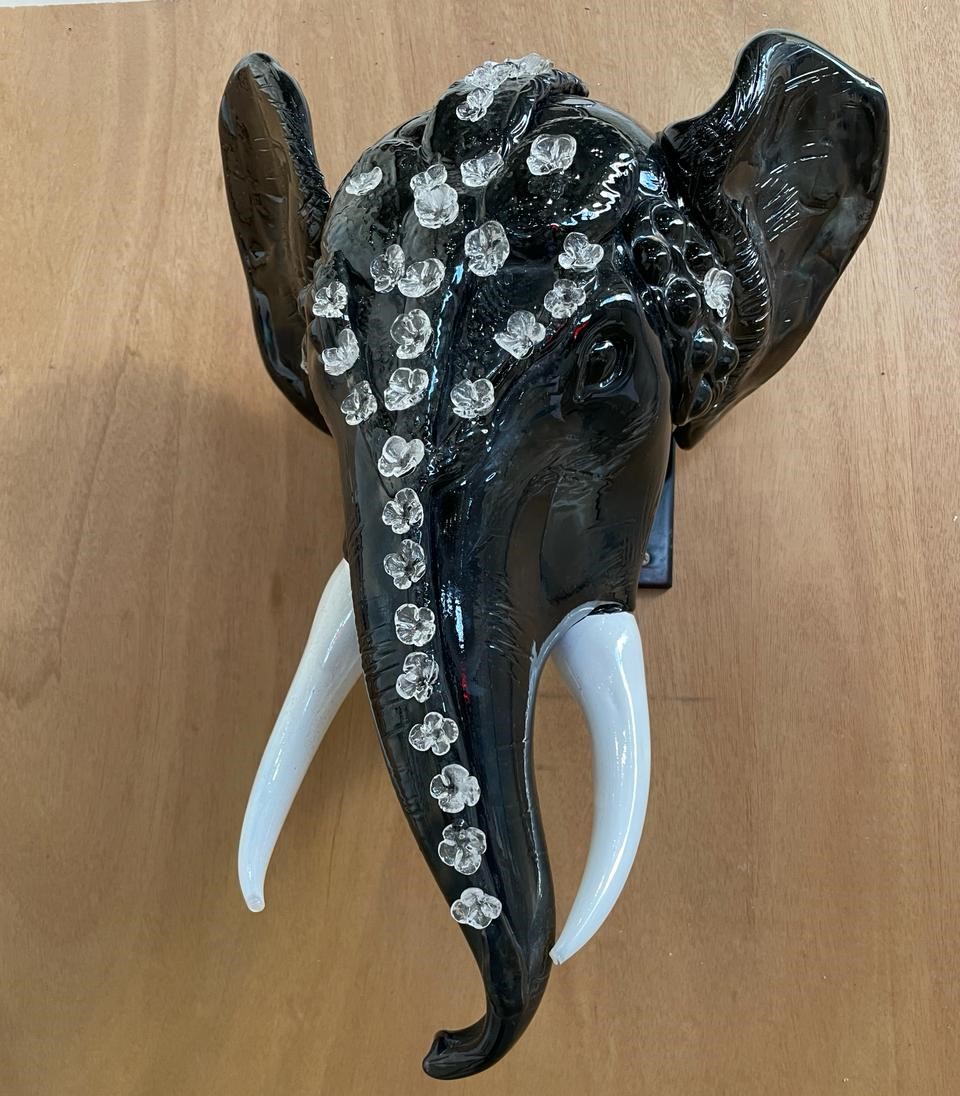
A work produced in collaboration with Grant Garmezy and Erin Neff Garmezy at Rural Modern Glass Studio. Photo Shireen Quadri
Born on a farm outside Nashville, Tennessee, Garmezy says his parents (Andy and Pat Garmezy) were very supportive of him as a young kid. He began his artistic journey as an apprentice to metal and jewellery fabricator Ben Caldwell. “He allowed me to come into the studio every day before school, from 6 am to 9 am, where I worked on creating metal jewellery. This experience helped me build a cool portfolio, on the basis of which I got acceptance from numerous art colleges. Eventually, I was admitted to Virginia Commonwealth University (VCU), where I enrolled in the crafts department, which offered classes in textiles, jewellery, ceramics, and furniture design. As I entered the studio, I was greeted by the sound of roaring studio equipment, and I was immediately hooked to the energy that the glass studio emanated,” he says.
It was in college that Garmezy met Erin Neff while studying glass. Soon after they first met in 2006, they got married and have been working as a team, creating exquisite glass artworks. While Erin works draw on plant life, Garmezy is majorly into creating animals. Talking about his work, Garmezy said, “I get to travel the world and do cool pieces for people. A lot of it is animalistic imagery — sculptures of animals. I grew up on a farm so I think that’s where my love for animals developed. I’m putting that spirit into the pieces and I feel like it’s a calm energy that travels to people’s homes and collections.”
Garmezy and Erin, along with the team at Rural Modern Glass Studio, have created some beautiful sculptures, mostly animals. “Some of the gold calligraphy that adorn the animal works are inspired by classic Indian designs and patterns,” said Erin. “Glass is very tricky to work with and it’s difficult to control sometimes. Making animals is like bringing the essence of life into the glass, bringing a soul to it. So, I wanted to always have movement in my work; it’s very crucial because glass in-making feels alive,” added Garmezy.
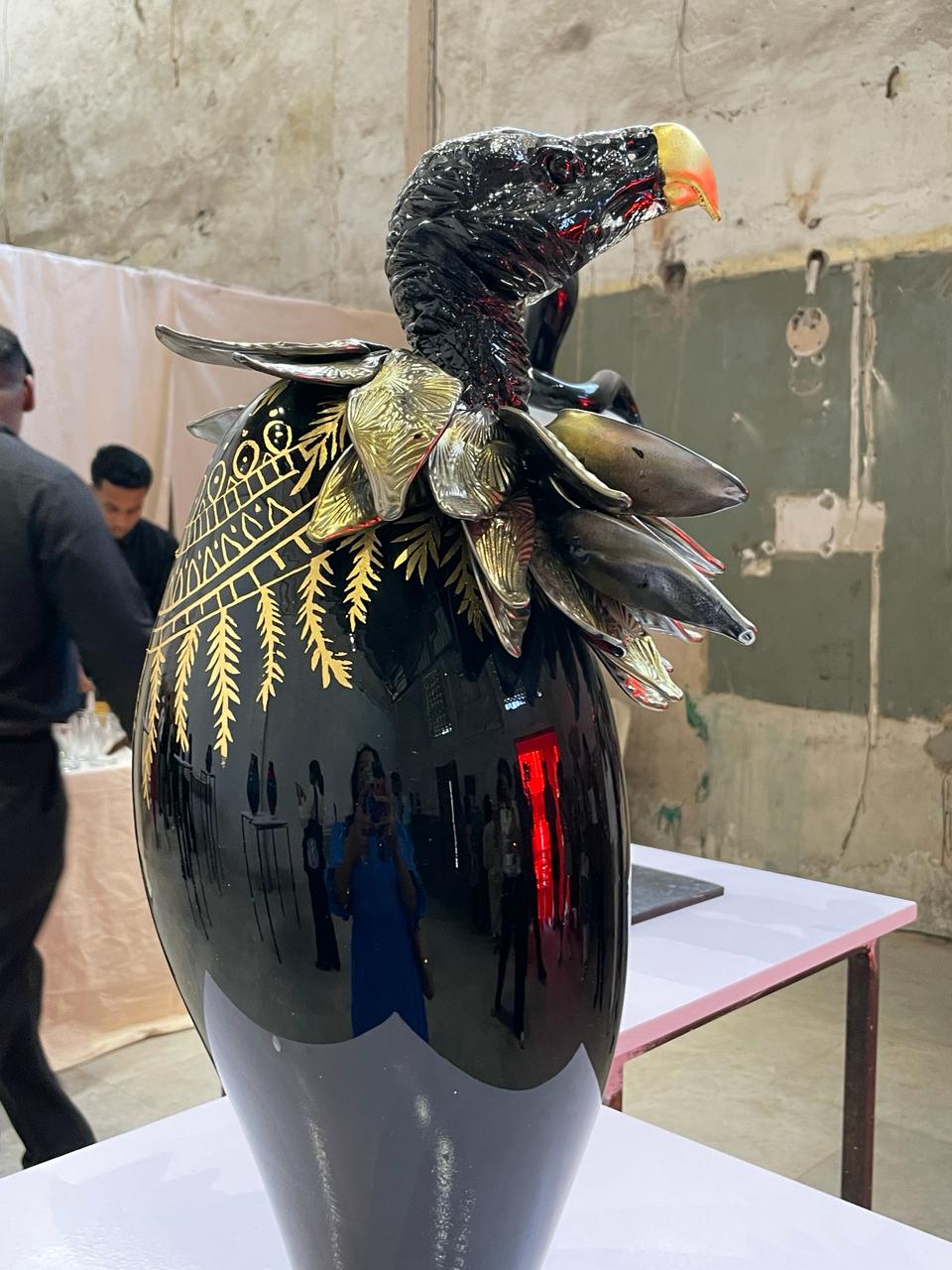
Another glasswork at Mumbai’s first hot glass studio produced in collaboration with Grant Garmezy. Photo Shireen Quadri
Glass as a medium of art can be very challenging, especially for the young artists. Talking about these, the artist says, “If an artist is just starting out, it is difficult to continue his passion because financially it’s very hard to get off the ground. They have to be persistent and be patient, which are two things that usually don’t go well with young people. I used to be one and I just knew this is a long-term play. It’s like the older you get the easier it gets. One has to keep doing it, and that’s why I tell younger people they just have to be patient. They get out of school, they’re 20 years old, they have no money, they have no real experience and stuff they’re making isn’t that great. And so it’s hard to make a living so one’s just got to be persistent and that leads them to finding their community; networking is an important part of it.”
Rural Modern Glass Studio was co-founded by Rathi and Ismail Plumber. The studio not only creates handcrafted pieces, but also helps young artists to learn and create with them. It brings together Rathi’s expertise in lighting design and Plumber’s glass artistry. At the workshop, Garmezy blew a large-size fish while Erin helped people learn giving shape to flowers and petals by heating glass sticks and moulding them into the shapes of leaves and flower petals. The live-demo by Garmezy was a sight to behold: moving his hands with dexterity, he gave shape to a fish sculpture within an hour. Watching him at work made me realise how glass artists find solace in the controlled chaos of their craft. And wonder: What is art but the process of creating a sense of order from the welter of chaos!
More from Arts
Comments
*Comments will be moderated




